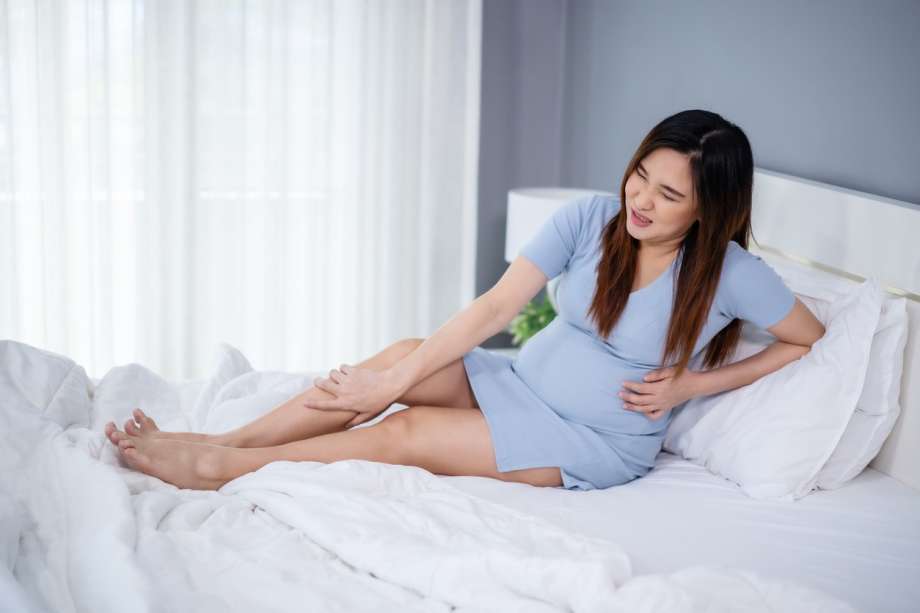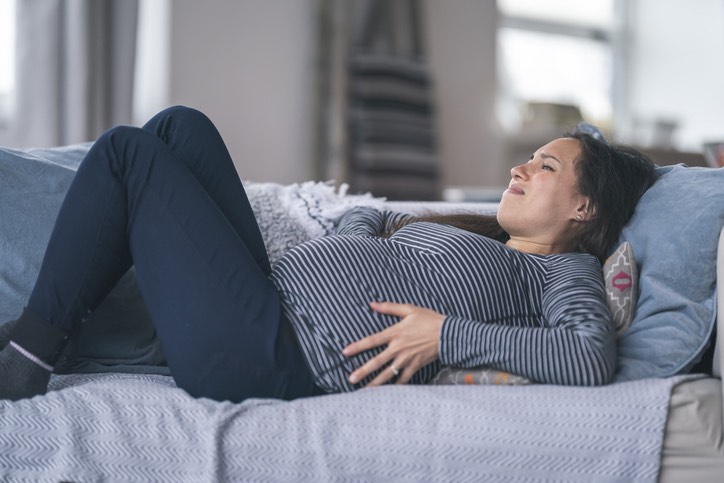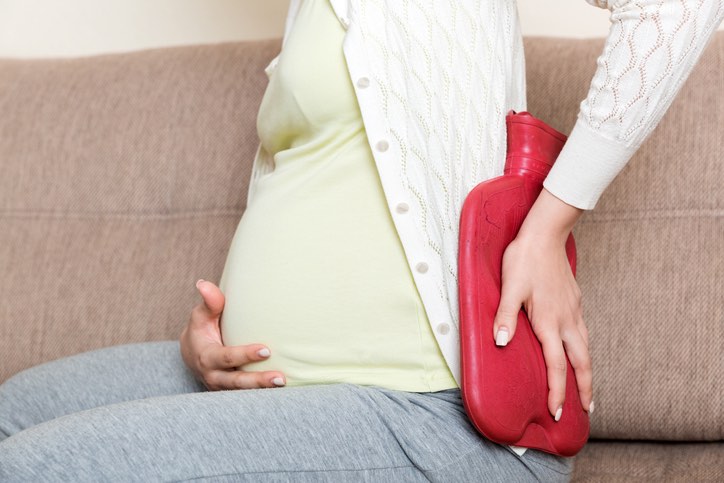Coping with Round Ligament Pain and Pregnancy

What is Round Ligament Pain?
Round ligament pain is typical in pregnancy and occurs in your uterus and surrounding ligaments. Round ligament pain is felt in the groin area or abdomen and usually feels like a mild cramping or a sharp pulling or stabbing. It most commonly occurs on the left side, but it can occur on the right side too.
Round ligament pain is more common in the second and third trimesters and subsequent pregnancies, although many women experience it with their first baby.
While round ligament pain is often uncomfortable and irksome, it usually doesn’t warrant medical attention or special treatment from your healthcare provider. Instead, like many other annoying pregnancy symptoms, it is one you will have to manage with home care. In some cases, it may occasionally continue even after you’ve given birth. Eight years after giving birth to my second son, I still experience temporary shooting pain if I shift positions or move suddenly.
Roughly 30% of women experience round ligament pain during pregnancy. For most women, it starts occurring in their second trimester or around week 14. Round ligament pain feels different from person to person but generally occurs in the groin, abdomen, or hip area.
The good news is there are many things you can do at home to help prevent and treat the aches and pains associated with your stretching ligaments!

Ways to Prevent Round Ligament Pain
Prevention is the best medicine, and there are quite a few things you can do to prevent or at least reduce the stabbing pain caused when your ligaments unexpectedly stretch.
1. Avoid Sudden Movements
Sudden or quick changes in position are among the most common causes of pain in the groin and lower abdomen, so take your time when getting up. When you change positions quickly, it puts extra stress on your ligaments, causing them to stretch. This causes pain. You can also try wearing a support band.
Belly bands support your growing belly and can prevent lower back and abdominal pain. Belly bands or maternity belts can also relieve sciatica pain, and you can wear them post-delivery to help regain your posture and shape.
2. Engage in Gentle Workouts
If your workouts are causing sharp pains or aches, decrease your activity level. Additionally, gentle stretches, prenatal yoga, and low-impact exercises like swimming and walking will naturally stretch your hip and groin area and create more flexibility.
3. Rest Your Feet and Legs
Take breaks whenever possible and put your feet and legs up to relieve pressure from your back and abdomen. Your growing baby puts a lot of pressure on your expanding uterus, which contributes to lower back pain. Plus, as your baby grows, your ligaments stretch, so get those legs up and take a break!
4. Try Pre-Sneeze Stretches
This one sounds a bit funny, but the American Pregnancy Association (APA) says if you’re about to sneeze, cough, or laugh, bend and flex your hips first. The motion reduces the pull on the ligaments and can prevent or reduce pain.
Treating Round Ligament Pain

Round ligament pain typically only lasts a few seconds, but in some cases, it can last several hours. If the pain is severe and does not feel better after resting or engaging in home care exercises, give your ob-gyn a call. The APA recommends calling your doctor if the pain lasts more than a few minutes.
Here are some ways you can treat round ligament pain at home:
1. Have a Warm Bath
A warm bath provides relief for all types of aches and pains. Relaxing in a warm bath also relieves tension and stress. However, your bath water must be warm, not hot, especially in the first trimester. Hot baths can lead to miscarriage or pre-term labor.
2. Take Pain Relievers
Over-the-counter pain relievers like Tylenol (acetaminophen) are safe for most pregnant women and women who are breastfeeding. However, you should always speak with your doctor before taking any medication.
3. Use a Heat Pad
Like a warm bath, the warmth from a heat pad relieves the aches associated with round ligament pain. If you don’t have a heating pad, you can create a warm compress with a towel or washcloth.
When to Call Your Doctor
Round ligament pain is a normal part of pregnancy. However, there are a few situations in which you should seek out medical advice.
Give your obstetrics office a call if your pain worsens or doesn’t alleviate with rest and home care. If you experience severe abdominal pain, a fever, chills, bleeding, spotting, vaginal discharge, or feel light-headed or confused, seek immediate medical attention as these could be signs of a miscarriage, pre-term labor, or preeclampsia.
The Mayo Clinic states that severe pain in your back could be a sign of a urinary tract infection, kidney infection, or preterm labor. If you see blood or experience a burning sensation during urination, develop a fever with back pain, or experience vaginal bleeding, give your doctor a call.
There is no single cause of round ligament pain, and different factors such as your health, weight, lifestyle, and the number of pregnancies may play a role. It is also more common in women carrying multiples (twins and triplets).
If you didn’t experience it with your first baby, you are more likely to have round ligament pain during any future pregnancies, since your uterus and ligaments are already stretched out.
Remember that round ligament pain is a regular occurrence during pregnancy and usually nothing to worry about. Simple pain relief measures and relaxation techniques often solve the problem or may even prevent it in the first place! As with all things related to pregnancy wellness, if you have any concerns or questions, reach out to your doctor, as they are the most reliable source of treatment and advice.
Enjoyed this article? Read about lower back pain in pregnancy.

